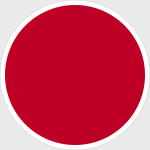DeAgostini DAWF31 Imperial Japanese Navy Mitsubishi A6M3 "Zero" Fighter - Kazuo Tsunoda, 2nd Kokutai, Buna Airfield, New Guinea, 1942 (1:72 Scale)
"We have resolved to endure the unendurable and suffer what is insufferable."
- Japanese Emperor Hirohito, after the Hiroshima bombing
 The Mitsubishi A6M "Zero" is a long-range carrier-based fighter aircraft formerly manufactured by Mitsubishi Aircraft Company, a part of Mitsubishi Heavy Industries. It was operated by the Imperial Japanese Navy (IJN) from 1940 to 1945. The A6M was designated as the Mitsubishi Navy Type 0 carrier fighter, or the Mitsubishi A6M Rei-sen. The A6M was usually referred to by its pilots as the Reisen (zero fighter), "0" being the last digit of the imperial year 2600 (1940) when it entered service with the Imperial Navy. The official Allied reporting name was "Zeke", although the name "Zero" was used colloquially as well.
The Mitsubishi A6M "Zero" is a long-range carrier-based fighter aircraft formerly manufactured by Mitsubishi Aircraft Company, a part of Mitsubishi Heavy Industries. It was operated by the Imperial Japanese Navy (IJN) from 1940 to 1945. The A6M was designated as the Mitsubishi Navy Type 0 carrier fighter, or the Mitsubishi A6M Rei-sen. The A6M was usually referred to by its pilots as the Reisen (zero fighter), "0" being the last digit of the imperial year 2600 (1940) when it entered service with the Imperial Navy. The official Allied reporting name was "Zeke", although the name "Zero" was used colloquially as well.
The Zero is considered to have been the most capable carrier-based fighter in the world when it was introduced early in World War II, combining excellent maneuverability and very long range. The Imperial Japanese Navy Air Service also frequently used it as a land-based fighter.
In early combat operations, the Zero gained a reputation as a dogfighter, achieving an outstanding kill ratio of 12 to 1, but by mid-1942 a combination of new tactics and the introduction of better equipment enabled Allied pilots to engage the Zero on generally equal terms. By 1943, the Zero was less effective against newer Allied fighters. The Zero lacked hydraulic boosting for its ailerons and rudder, rendering it difficult to maneuver at high speeds. Lack of self-sealing fuel tanks also made it more vulnerable than its contemporaries. By 1944, with Allied fighters approaching the A6M's levels of maneuverability and consistently exceeding its firepower, armor, and speed, the A6M had largely become outdated as a fighter aircraft. However, as design delays and production difficulties hampered the introduction of newer Japanese aircraft models, the Zero continued to serve in a front-line role until the end of the war in the Pacific. During the final phases, it was also adapted for use in kamikaze operations. Japan produced more Zeros than any other model of combat aircraft during the war.
Pictured here is a 1:72 scale replica of an Imperial Japanese Mitsubishi A6M2 "Zero" fighter that was piloted by Kazuo Tsunoda, who was attached to the 2nd Kokutai, then deployed to Buna Airfield, on New Guinea, during 1942.
Now in stock!
Dimensions:
Wingspan: 6-1/2-inches
Length: 5-inches
Release Date: August 2021
Historical Account: "Down on the Farm" - Kazuo Tsunoda (October 11th, 1918 - February 14th, 2013) was an officer and ace fighter pilot in the Imperial Japanese Navy (IJN) during the Second Sino-Japanese War and Pacific Campaign of World War II. In his combat career, Tsunoda was officially credited with destroying nine enemy aircraft.
From May 1942 to May 1943, Tsunoda participated in the New Guinea Campaign, Solomon Islands and Guadalcanal Campaigns as a member of the 2nd Air Group and 582 Air Group. During the Naval Battle of Guadalcanal on November 14th, 1942, Tsunoda was shot down near the Russell Islands while covering an army transport convoy delivering troops to Guadalcanal. Tsunoda was rescued by the destroyer Amagiri.
In November 1944, while stationed at Cebu in the Philippines, Tsunoda volunteered as a kamikaze pilot. He was unable, however, to find any enemy ships to attack. Later, he escaped the Philippines to Japanese-occupied Taiwan after the American landings and survived the war.
He was a farmer in Ibaraki prefecture after the war. He died on February 14th, 2013.


